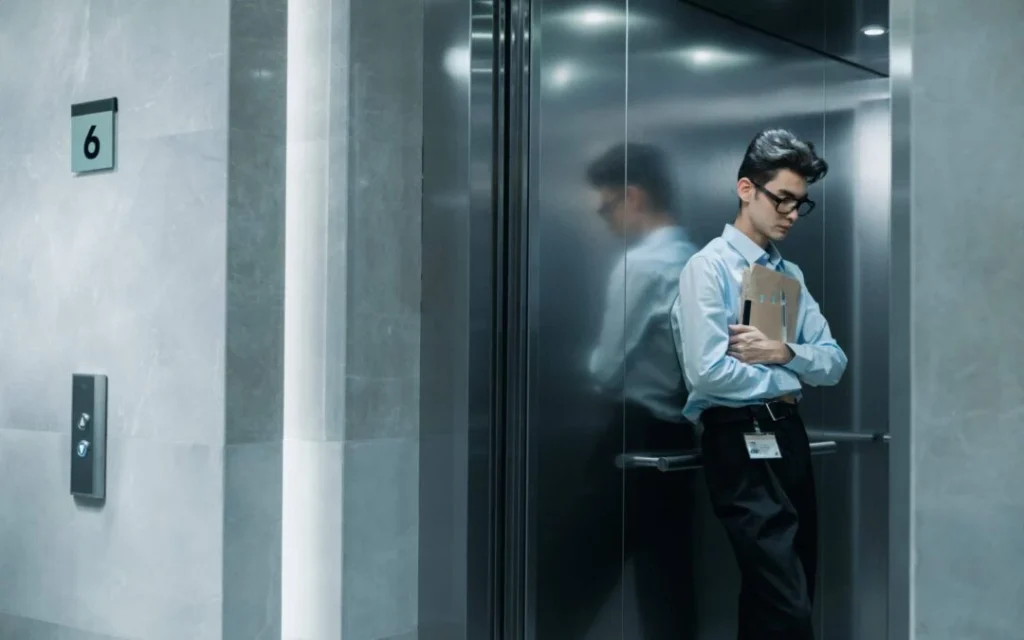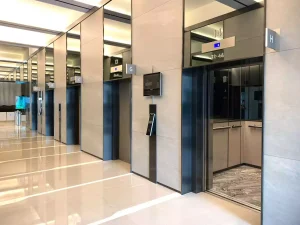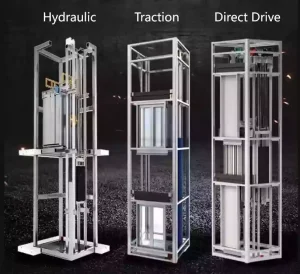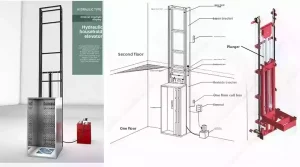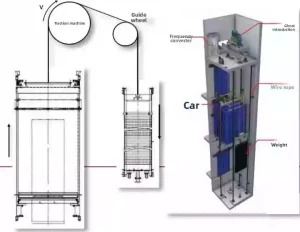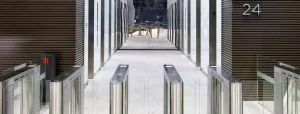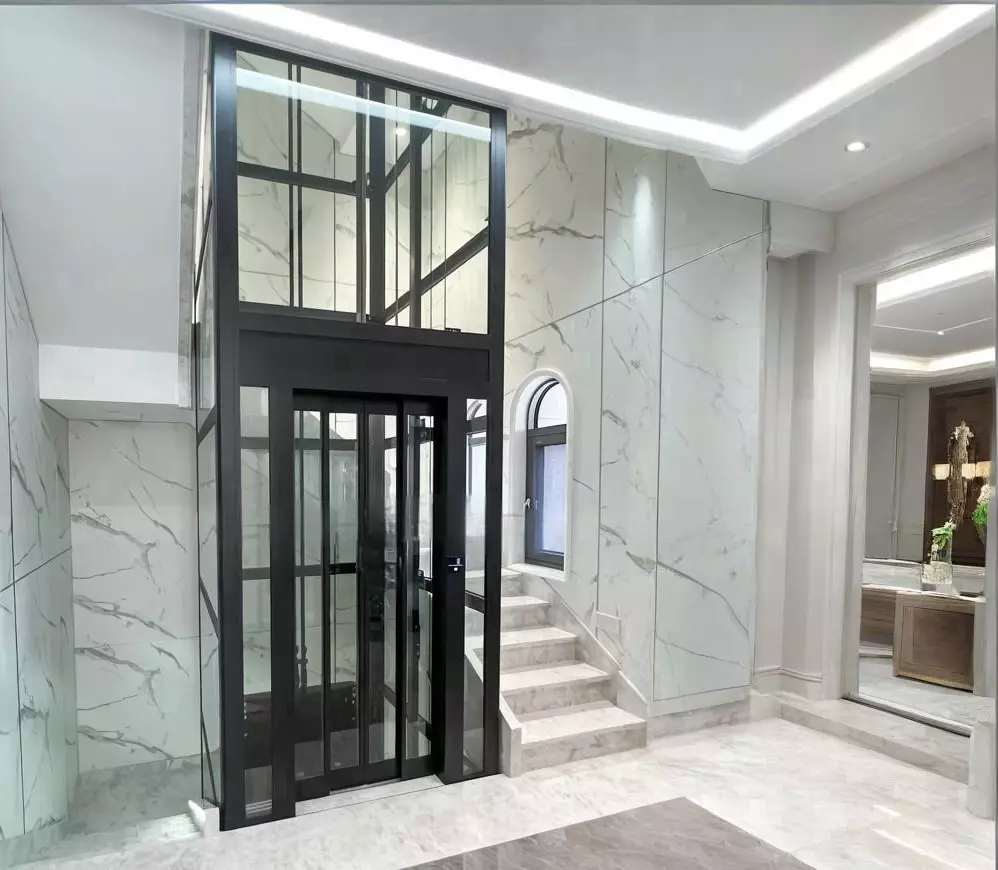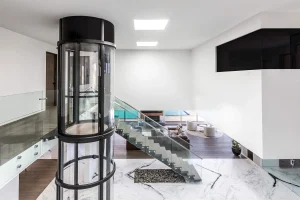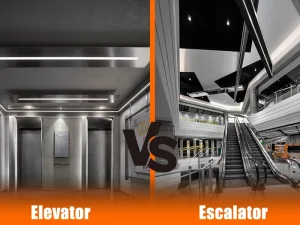In the world of modern buildings, it’s hard to ignore the important role of commercial elevators. These machines quietly make life easier for people every day. From moving customers in busy shopping malls to carrying supplies in office towers, the versatility and reliability of commercial elevators make them a key part of today’s architecture.
What Is a Commercial Elevator?
A commercial elevator is a lift used in business and public buildings to move people or goods between floors. It is an important part of modern building design, helping spaces work better and stay easy to use.
This machine works by using power to raise and lower a cab inside a shaft. Passengers or cargo are loaded into the cab, which then travels smoothly to the chosen floor.
From hotels and office towers to hospitals and shopping centers, commercial elevators make it faster and safer to move around. They save time, reduce effort, and play a key role in keeping buildings accessible and efficient.
How Does a Commercial Elevator Work?
The process starts when a passenger or cargo enters the commercial elevator cab and selects a floor. This action sends a signal to the elevator’s control system, which begins the lift’s movement.
The cab is pulled up or lowered by strong cables or a hydraulic system. These systems are powered by an electric motor, giving the cab a smooth and steady ride. Sensors check the cab’s position at all times to make sure it stops exactly at the right floor.
When the cab reaches the chosen floor, the doors open so people or goods can exit safely. Every step, from starting the motor to opening the doors, is designed to be quick, reliable, and safe.
What Are the Main Types of Commercial Elevators?
Commercial elevators come in several main types, each designed for different building needs and passenger loads. From hydraulic to traction systems, each type offers unique benefits and works best in certain environments.
Hydraulic Elevators
Hydraulic elevators use a piston powered by hydraulic fluid to move the cab up and down. They are common in low- to mid-rise buildings.
Advantages:
-
Simple design and smooth ride.
-
Good for buildings with fewer floors.
Disadvantages:
-
Slower travel speed than traction elevators.
-
Use more energy and need more space for equipment.
Traction Elevators
Traction elevators use steel ropes and a counterweight, moved by an electric motor. They are often used in mid- to high-rise buildings.
Advantages:
-
Faster travel and more energy-efficient than hydraulic lifts.
-
Can serve taller buildings.
Disadvantages:
-
Higher installation cost.
-
Requires strong building structure to support the system.
Machine Room-Less (MRL) Elevators
MRL elevators are traction elevators that do not need a separate machine room. The motor is placed inside the shaft.
Advantages:
-
Saves space in the building.
-
Energy-efficient and quiet.
Disadvantages:
-
Can be harder to maintain.
-
Not ideal for very high-rise buildings.
Pneumatic Elevators
Pneumatic elevators use air pressure to move the cab. They are usually smaller and often used in special commercial spaces.
Advantages:
-
Compact and stylish design.
-
Easy to install in existing buildings.
Disadvantages:
-
Limited capacity and travel height.
-
Not suited for heavy or frequent use.
What Are the Dimensions of a Commercial Elevator?
Typical dimensions for a commercial elevator can vary depending on the building type and its use. But, a standard commercial elevator cab might measure about 5 to 6 feet in width, 7 to 8 feet in depth, and 8 feet in height. These numbers are only examples and can change based on the elevator’s design, capacity, and building requirements.
How Much Does a Commercial Elevator Cost?
When it comes to commercial elevators, the cost can vary a lot depending on size, design, and technology.
A small, basic commercial elevator may start around $30,000, while larger models with advanced features can cost $100,000 or more. This wide range shows why it is important to understand what affects the final price of a commercial elevator.
Factors that influence the cost include:
-
Elevator Type: Hydraulic, traction, and machine room-less (MRL) systems come with different prices. Traction elevators usually cost more because of their speed and efficiency.
-
Capacity and Size: Elevators that can carry more passengers or goods often need stronger systems, which increases cost.
-
Quality and Brand: Well-known brands with a record of safety and reliability may charge more, but often provide better durability and service.
-
Extra Features: Options like custom interiors, faster speeds, or energy-saving technology can add to the price.
-
Building Requirements: Installation costs may rise depending on the building’s structure, permits, and local regulations.
For example, a small hydraulic elevator for a low-rise office might be on the lower end of the price range, while a high-speed traction elevator for a tall commercial tower could be a much bigger investment.
How to Choose the Right Commercial Elevator for Your Building?
Choosing the right commercial elevator is very important for the safety, comfort, and efficiency of your building. Here are some key factors you should consider:
Load Capacity and Size Make sure the elevator’s load capacity matches your building’s needs. A larger building with heavy traffic may need an elevator that can carry more passengers or goods.
Building Height and Speed Check the number of floors the elevator will serve and the speed you need. Taller buildings often need faster elevators to reduce waiting time.
Drive System Decide between hydraulic, traction systems. Each type has different costs, space needs, and energy efficiency levels.
Shaft and Door Dimensions Ensure the elevator fits the available shaft space in your building. Door size should also match the type of use, whether for people, wheelchairs, or cargo.
Energy Efficiency Look for features like regenerative drives or LED lighting. These can lower long-term operating costs and support green building goals.
Extra Features Consider more options such as custom interiors, touchless controls, or advanced safety systems to improve user experience and meet local regulations.
By matching these factors with your building’s needs, you can choose a commercial elevator that offers safety, reliability, and long-term value.
Conclusion
Commercial elevators move people and goods between floors in many types of buildings. They have changed from simple lift systems to machines that can handle more work and save energy. Main types include traction, hydraulic. Building owners choose based on space, number of users, and cost. A commercial elevator is now a basic part of most multi-story buildings.
FAQ About Commercial Elevators
Choosing, installing, and maintaining a commercial elevator can raise many questions for building owners. Below are answers to some of the most common questions.
1. What is the difference between a residential elevator and a commercial elevator?
A residential elevator is made for private homes. It is smaller, carries fewer people, and meets home safety codes. A commercial elevator is built for offices, hotels, malls, and other public buildings. It is larger, stronger, and must meet stricter building and safety codes.
2. What is the standard hourly rate for a commercial elevator?
The hourly rate for commercial elevator work depends on the location and service type. In many places, rates range from $100 to $200 per hour for repairs or maintenance. Emergency calls can cost more.
3. At what stage is a commercial building elevator installed?
A commercial elevator is usually installed after the main building structure is complete but before final interior work. This stage allows the elevator shaft and equipment to be set up safely before walls and finishes are added.
4. How much does it cost to replace a commercial elevator?
Replacing a commercial elevator can cost from $100,000 to $200,000 or more. The price depends on the elevator type, size, number of floors, and extra features.
5. How long does it take to install a commercial elevator?
Installing a commercial elevator usually takes 4 to 8 weeks. The time depends on the building design, elevator type, and any special features required.


